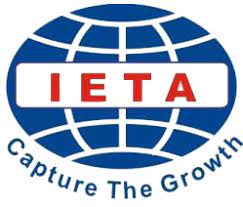DESIGNING ESP COURSES IN INDONESIA: WHO IS RESPONSIBLE?
 ),
), (1) FBSS UNP Padang
 Corresponding Author
Corresponding Author
Copyright (c) 2017 Lingua Didaktika: Jurnal Bahasa dan Pembelajaran Bahasa
DOI : https://doi.org/10.24036/ld.v2i2.7361
Full Text:
 Language : en
Language : en
Abstract
This article is intended to expose the implication of the results of two long surveys on the existence of ESP (English for Specific Purposes) as a compulsory subject with various names at different universities and colleges in Indonesia. In my first research, it was found out that ESP courses were misleading, misconduct, and amburadul. This situation happened not only at the small and developing universities but also at the established and well-known universities such as University of Indonesia, Padjadjaran University, and Gadjah Mada University. This year (2007), I conducted another research funded by the government on the same topic but different research subjects at some universities in West Sumatera (Andalas Univeristy, State University of Padang, Bung Hatta University, and Eka Sakti University), particularly at three different study programs: Accounting, Engineering, and Physics. The data of this research were collected from totally 270 students, 12 ESP lecturers, 9 heads of study programs, 9 senior lecturers, and 3 TEFL experts. The findings of this research supported the previous findings that ESP faces critical problems in its design and implementation for limited professionalism of human resources. Almost all of the lecturers of the ESP courses were never been particularly prepared and trained to teach ESP. No other parties of stakeholders felt responsible for the ESP program, but the ESP lecturer. From the findings of the two researches, the question arises ‘Who should be responsible for the ESP in Indonesia?”
Keywords
References
Bosher, S. and K. Smalkoski. 2002. From needs analysis to curriculum development: designing a course in health-care communication for immigrant students in the USA. English for Specific Purposes, 21: 59--80.
Brannen, J. (ed.) . 1992. Mixing Methods: Qualitative and Quantitative Research. Aldershot: Avebury.
Carter, D. 1983. Some propositions about ESP. English for Specific Purposes, 2: 131--137.
Chia, H. U., R. Johnson, H. L. Chia and F. Olive. 1999. English for college students in Taiwan: a study of perceptions of English needs in a medical context. English for Specific Purposes, 18: 107--120.
Clarke, D. F. 1991. The negotiated syllabus: What is it and how is it likely to work? Applied Linguistics, 12, 1, pp. 13–28.
Cook, V.J. (ed.). 1996. Competence and multi-competence. In Brown et al. 1996. 96—114.
Daoud, M. 2000. LSP in North Africa: status, problems, and challenges. Annual Review of Applied Linguistics. 20: 77—96.
Deutch, Y. 2003. Needs analysis for academic legal English courses in Israel: a model of setting priorities. Journal of English for Academic Purposes, 2.2: 39-60
Dobson, G. 1997. Development of an in-house ESP course: A descriptive analysis (Unpublished Dissertation). www. les. aston. ac. uk/ lsu/ diss/ vwarta. html.
Donna, S. 2000. Teaching Business English. Cambridge: Cambridge University Press.
Dubin, F., and E. Olshtain. 1986. Course design. Cambridge: Cambridge University Press.
Dudley-Evans, T. and M. J. St. John. 1998. Developments in English for Specific Purposes: A Multi-disciplinary Approach. Cambridge: Cambridge University Press.
Field, K. (ed.) . 2000. Issues in Modern Foreign Languages Teaching. London: Routledge Falmer.
Graves, K. 2000. Designing Language Courses: A Guide for Teachers. Boston, Mass.: Heinle & Heinle Publishers.
Harmer, J. 2001. The Practice of English Language Teaching. London: Longman.
Holliday, A. 1995. Assessing language needs within an institutional context: an ethnographic approach. English for Specific Purposes, 14: 115--126.
Hutchinson, T. and A. Waters. 1987. English for Specific Purposes: A Learning-centred Approach. Cambridge: Cambridge University Press.
Jasso-Aguilar, R. 1999. Sources, methods and triangulation in needs analysis: a critical perspective in a case study of Waikiki hotel maids. English for Specific Purposes, 18: 27--46.
Johnson, D. M. 1992. Approaches to Research in Second Language Learning. London: Longman.
Jordan, R. R. 1997. English for Academic Purposes. A Guide and Resource Book for Teachers. Cambridge: Cambridge University Press.
Kavaliauskien, G. 2002. Aspects of learning ESP at university. English for Specific Purposes World Web-based Journal. 1.1. Available at: http //esp-world.7p.com.
Kusni. 2007. Model Perancangan Matakuliah ESP (English for Specific Purposes) untuk Mahasiswa Program Studi Non-bahasa Inggris (Competitive Grant Research). Padang: Universitas Negeri Padang.
Kusni. 2004. Efektifitas dan Permasalahan Program ESP (English for Specific Purposes) di Perguruan Tinggi (Unpublished Dissertation). Depok: Universitas Indonesia.
Mackay, R. 1978. Identifying the nature of the learner's needs. In R. Mackay & A. Mountford (Eds.), English for Specific Purposes (pp. 21-42). London: Longman.
McDonough, J. 1984. ESP in Perspective: A Practical Guide. London: Collins.
Nunan, D. 1990. Using learner data in curriculum development. ESP Journal, 9, 17-32.
----------. 1988. Syllabus Design. Oxford: Oxford University Press.
Reilly, T. 1988. Approaches to foreign language syllabus design. ERIC DIGEST 295460.
Robinson, P. 1991. ESP Today: A Practitioner's Guide. London: Prentice Hall.
Strevens, P. 1988. ESP after twenty years: a re-appraisal. In M.L. Tickoo. ESP: State of the Art. Anthology Series 21. Singapore: RELC
Tubtimtong, W. 1994. The problems of translating communicative needs into course design and implementation. In Khoo, R. (ed.) . 1994b. 123—131.
 Article Metrics
Article Metrics
 Abstract Views : 2046 times
Abstract Views : 2046 times
 PDF Downloaded : 490 times
PDF Downloaded : 490 times
Refbacks
- There are currently no refbacks.
Copyright (c) 2017 Lingua Didaktika: Jurnal Bahasa dan Pembelajaran Bahasa

This work is licensed under a Creative Commons Attribution-NonCommercial 4.0 International License.









